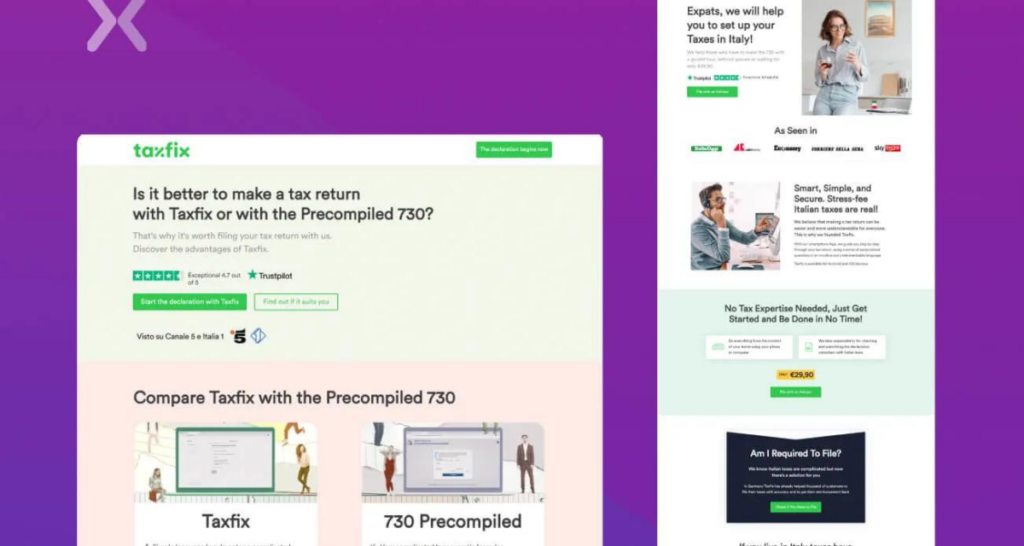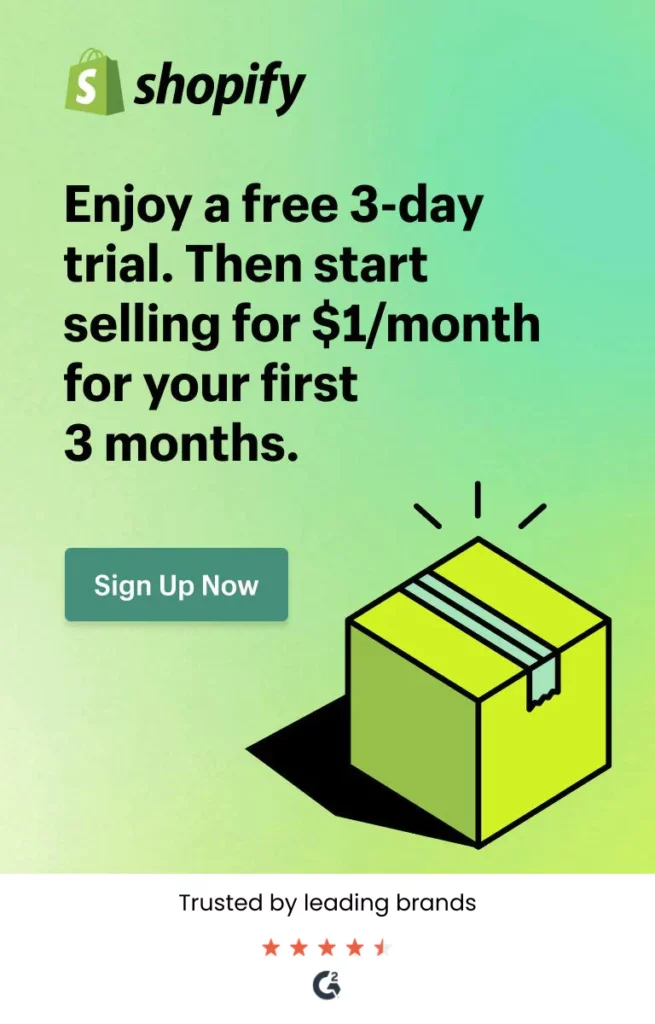In the digital marketing era, where attention spans are getting shorter than ever, the art of creating high-converting landing pages has become a crucial skill for online success. Whether you’re promoting a product or service or capturing leads, high converting landing page can make all the difference.
In this ultimate guide, we will guide you what makes a landing page highly effective, exploring landing page diffrence, benefits, types, and the techniques involved.
What is a high-converting landing page?

A high-converting landing page is a single web page designed with a specific goal in mind, such as driving sales, capturing leads, or encouraging user engagement. Unlike regular website pages, landing pages are focused and dismiss distractions and guiding visitors toward a single call to action.
The Difference Between Website Pages and Landing Pages:
Website pages have lots of information about a business, covering everything about it. On the other hand, landing pages are super focused on one thing. They show information quickly and interestingly. Landing pages don’t have many buttons to click, so people stay more focused. This makes it more likely for visitors to do what the page wants them to do.
For example, imagine a website for a bakery. The main page might have all kinds of details about the bakery, like the history, menu, and team. That’s like a website page. Now, think about a landing page just for a special cake they’re selling for Valentine’s Day. It will be short and sweet, talking only about that cake, why it’s amazing, and a button to order it. This focused page increases the chances that someone will order that special Valentine’s cake.
Why landing pages matter to Google:
Google values a smooth online experience, and landing pages that are well-optimized play a big role in creating a positive environment. Landing pages that convert well, meaning they get visitors to take the desired action and match what users are looking for, are more likely to show up higher in Google search results.
For example, imagine you’re searching for “the best running shoes.” If a website has a landing page that not only talks about running shoes but also lets you easily find and buy them, that page is more likely to be favoured by Google. This is because it provides a good experience for users who are specifically looking for information about running shoes.
In simpler terms, Google rewards websites that make it easy for users to find what they’re looking for. So, if a landing page is well-designed, meets the needs of the user, and encourages them to take the desired action (like making a purchase or signing up), it stands a better chance of ranking higher on Google.
Types Of Landing Pages
Landing pages serve various purposes in online marketing, each designed to achieve specific goals. Lead generation pages are crafted to gather user information, usually through forms, by offering valuable content or incentives. For instance, a company might create a lead generation page offering a free e-book in exchange for visitors’ email addresses.
Click-through pages guide users to another page, often an e-commerce or product page, encouraging them to make a purchase. Imagine a click-through page showcasing a new product with a “Shop Now” button that directs users to the online store.
Sales pages are strategically developed to persuade visitors to make immediate purchases. They utilize compelling copy and persuasive elements, such as testimonials or limited-time offers. An example could be a sales page for a fitness program, emphasizing its transformative benefits and offering a discounted rate for a limited period.
Coming soon, landing pages will generate anticipation for upcoming products or events. They provide teasers and encourage users to sign up for notifications. An example is a tech company’s coming soon page for a new app, enticing users with sneak peeks and a “Notify Me” button.
Launch page landing pages: This landing page is designed for product launches, presenting detailed information, and creating excitement. For instance, a fashion brand might have a launch page for a new clothing line featuring photos, descriptions, and a countdown to the release date.
Subscription landing pages: focus on acquiring new subscribers for services or newsletters. They highlight the benefits of subscribing and often include a sign-up form. A media platform, for instance, might use a subscription landing page to promote exclusive content and attract new members.
Countdown landing pages- Countdown landing page utilize timers to create a sense of urgency. They are often associated with limited-time offers or events. An example could be a holiday sale countdown page urging visitors to take advantage of discounts before time runs out.

Techniques for Creating High-Converting Landing Pages:
Creating landing pages that effectively convert visitors into customers involves implementing several key techniques. One crucial element is crafting clear and compelling headlines that instantly capture the attention of your audience.
These headlines should be concise and persuasive, clearly conveying the value of your product or service. For example, instead of a generic headline like “Great Products Available,” opt for something more specific like “Transform Your Skin with Our Organic Skincare Products.”
Compelling Headlines: In addition to compelling headlines, the use of engaging visuals is vital for enhancing the overall appeal of your landing page. Incorporate high-quality images, videos, and graphics that resonate with your target audience and effectively showcase your offerings.
For instance, if you’re promoting a fitness app, include visuals of individuals achieving their fitness goals using your app to create a stronger connection with potential users.
A strong call-to-action (CTA) is another essential component of a high-converting landing page. Communicate the desired action you want visitors to take, whether it’s making a purchase, signing up for a trial, or downloading a resource. An effective CTA is both persuasive and actionable. Instead of a generic “Submit” button, use a more compelling and specific phrase like “Start Your 14-Day Free Trial” to encourage users to take the next step.
Mobile Responsive Lastly, ensure that your landing page is mobile friendly. With a growing number of users accessing websites on various devices, including smartphones and tablets, it’s crucial to optimize your landing page for seamless viewing across different screens. This means that all elements of your page should adapt and display properly on smaller screens, providing a positive user experience regardless of the device used.
By incorporating these techniques—clear and compelling headlines, engaging visuals, a strong call-to-action, and mobile responsiveness—you can create landing pages that not only capture attention but also guide visitors toward conversion, ultimately boosting the success of your online campaigns.
Landing Page Copywriting Tips:
- Crafting an effective landing page involves strategic copywriting to engage visitors. One crucial tip is to prioritize highlighting the benefits of your product or service rather than merely listing features. For instance, if you’re promoting a fitness app, instead of just stating that it has a workout tracker, emphasize how it helps users stay motivated and achieve their fitness goals.
- In addition, it’s essential to keep the language on your landing page clear and concise. Visitors should quickly grasp the value you offer without feeling overwhelmed by unnecessary details. Using our fitness app example, you might briefly describe how the app simplifies tracking progress and provides personalized workout recommendations, all in a user-friendly interface.
- To prompt immediate action, incorporate words that create a sense of urgency. Phrases like “limited-time offer” or “exclusive access for early birds” can encourage visitors to take the desired action promptly. Continuing with the fitness app example, you could emphasize a special promotion for the first 100 sign-ups, creating a sense of urgency for potential users to take advantage of the opportunity.
Design of Landing Pages:
Creating an effective landing page involves careful consideration of design elements to enhance user engagement. One crucial aspect is the layout, where simplicity is key. A clutter-free design ensures visitors can quickly grasp the content without distractions. For instance, use ample white space to give a sense of openness and avoid overwhelming visitors with too much information. This clean layout contributes to a visually appealing interface that encourages users to stay on the page.
Maintaining consistent branding is equally vital for a seamless user experience. This means aligning the landing page with your overall brand identity. For example, use the same color palette, fonts, and imagery as those found on your main website or marketing materials. This coherence reinforces brand recognition and builds trust with visitors, as they can easily identify and connect with your brand across different platforms.
Conclusion:
Mastering the art of crafting high-converting landing pages is a dynamic process that involves a deep understanding of your audience, strategic design choices, and persuasive copywriting. By implementing the tips and techniques outlined in this ultimate guide, you’ll be well-equipped to create landing pages that not only capture attention but also drive meaningful results for your online efforts. Elevate your digital presence and achieve goal by making your landing pages.



